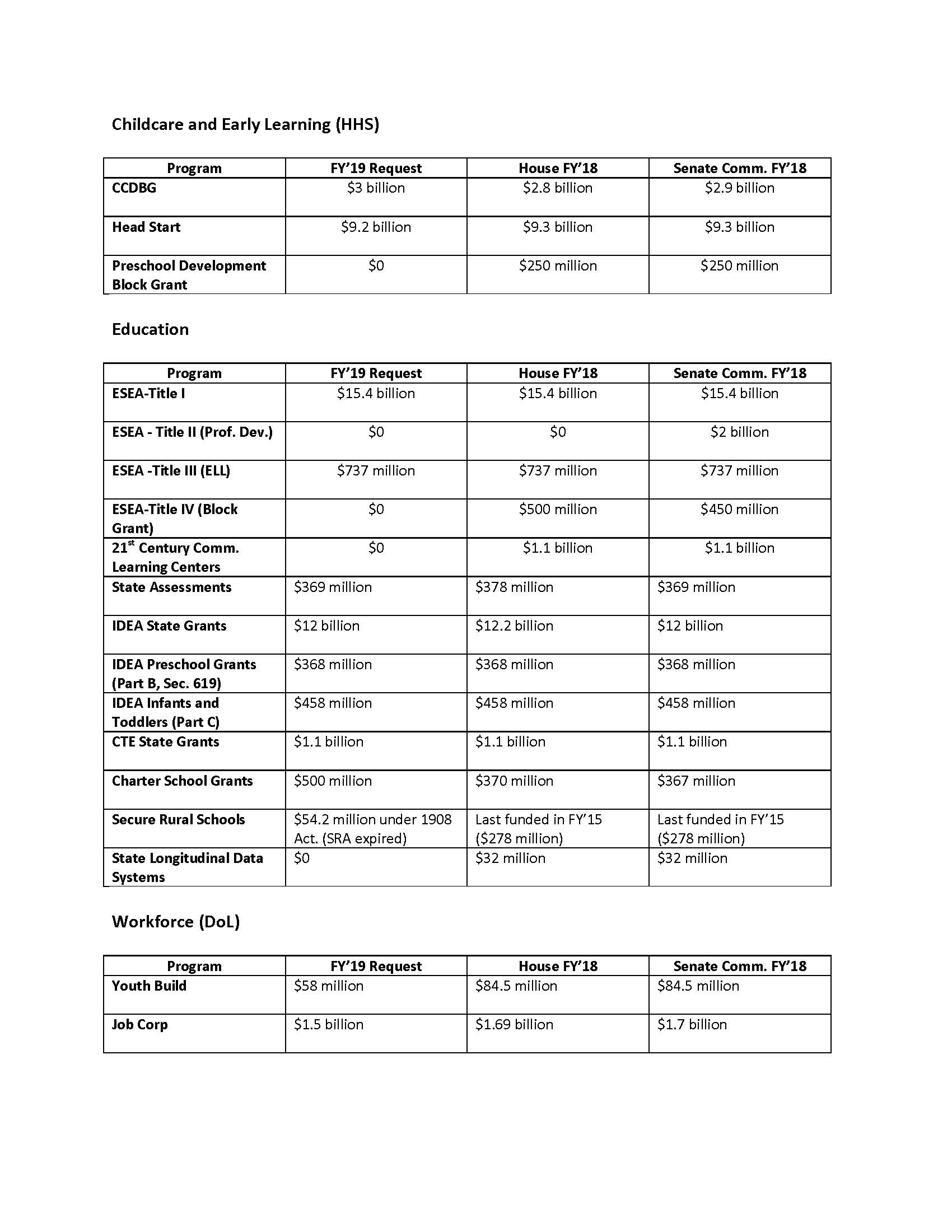Federal Budget Update
February 26, 2018
When Congress is involved, stranger things have a tendency to occur. In the past few weeks, Congress finalized the FY18 federal budget (even though the budget year started in October 2017), President Trump released his proposed FY19 budget, and then promptly amended his proposal two days later.
With another government shutdown facing Congress, Senate leadership negotiated a deal to finalize the FY18 budget and keep the government operating until March 23. For those of you unfamiliar with the federal budgeting process, this compromise in the form of a continuing resolution provides the top-line spending levels for the federal government for fiscal years 2018 and 2019. This is critical because it sets new limits on how much the government can spend in the next two years and allows both domestic (i.e. education funding) and military funding to receive significant increases.
Meanwhile, it provides those who will work on the appropriations additional time to develop a sweeping omnibus spending bill to fund the Department of Education and other agencies for fiscal year 2018. With the budget agreement complete (or nearly complete), however, appropriators now know how much funding they have to work with, so they can take the final steps required to complete the appropriations process.
Some of the specific spending commitments included in the deal are for the Child Care and Development Block Grant ($5.8 billion), the opioid crisis ($6 billion), VA hospitals and clinics ($4 billion), NIH research ($2 billion), infrastructure ($20 billion); and college affordability ($4 billion). Other specific education program funding will not be determined until the omnibus bill is finalized.
This is where we will need to stay vigilant to ensure there are no reductions to education funding. If you recall, the House adopted a budget that eliminated Title II Part-A funding. Thankfully, the Senate maintained Title II funding. Items such as Title II will be negotiated between the two houses as the appropriations bill is finalized.
Not surprisingly DACA was not included in the deal.
President’s FY19 Budget Proposal
Last week, President Trump released his proposed FY19 budget. Not surprisingly he is pursuing a very similar proposal as last year calling for wide-ranging cuts in the Every Student Succeeds Act (ESSA). In addition, his proposal reinforces his view of school “reform” through investments in charter schools and school choice.
The Trump Administration’s fiscal year 2019 budget proposes a $3.8 billion cut to the Department of Education, a $2.6 billion decrease for the Department of Labor, and a $18 billion decrease for the Department of Health and Human Services. This plan clearly provides insight into the administration's funding priorities and policy objectives. However, as we have seen of past year, it hardly drives Congress's decisions.
To put some of the proposal in context, it once again included the elimination of funding for Title II ($2.05 billion cut), a $43 million cut to Teacher Quality Partnership grants and the elimination of the Public Service Loan Forgiveness program. However, the budget expands incentives for school choice by $1 billion and increases defense spending by $80 billion. Given that the fiscal year 2018 appropriations process is not yet complete, the tables below compare the president’s FY’19 request to the FY’18 funding levels approved by the full House and the amounts approved by the Senate Appropriations Committee (the full Senate did not vote on the committee’s Fiscal Year 2018 Labor, HHS, Education bill).

